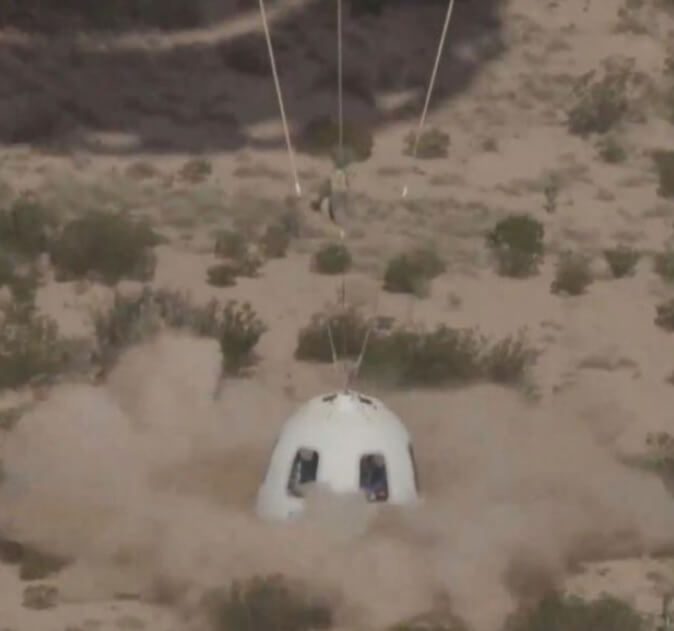On 19 June, at 1511 GMT, Blue Origin made a test flight of its New Shepard suborbital passenger vehicle from its Van Horn launch site in Texas. The test flight was in unmanned condition and was primarily for the purpose of testing an emergency escape system. The test flight above 100 km altitude was successful, with a successful ejection of the crew capsule. In doing so, 20 seconds after the normally planned separation of the capsule from the rocket section, as the escape motor fired it carried the capsule up to 118.8 km (389,846 ft), the highest ever altitude achieved in testing. The capsule re-entered the Earth’s atmosphere and made its planned parachute landing safely. Like previous flights an instrumented dummy dubbed “Mannequin Skywalker” was aboard during the 11 minute 16 second flight.

The uncrewed crew capsule make safe landing after New Shepard escape rocket test. Courtesy: Blue Origin
The space communications firm mu-Space Corp company also sent a small telemetered 6 kg experimental payload aboard the flight. While it eventually plans to use Blue Origin’s orbit capable New Glenn rocket to launch its comsat in 2020, on this short flight, its payload carried experiments for universities as well as for Thailand’s space agencies and organisations. The experiments included a bleeding preventive device, a carbon nanotube and a vacuum-sealed food product, as well as spacesuit material testing.








